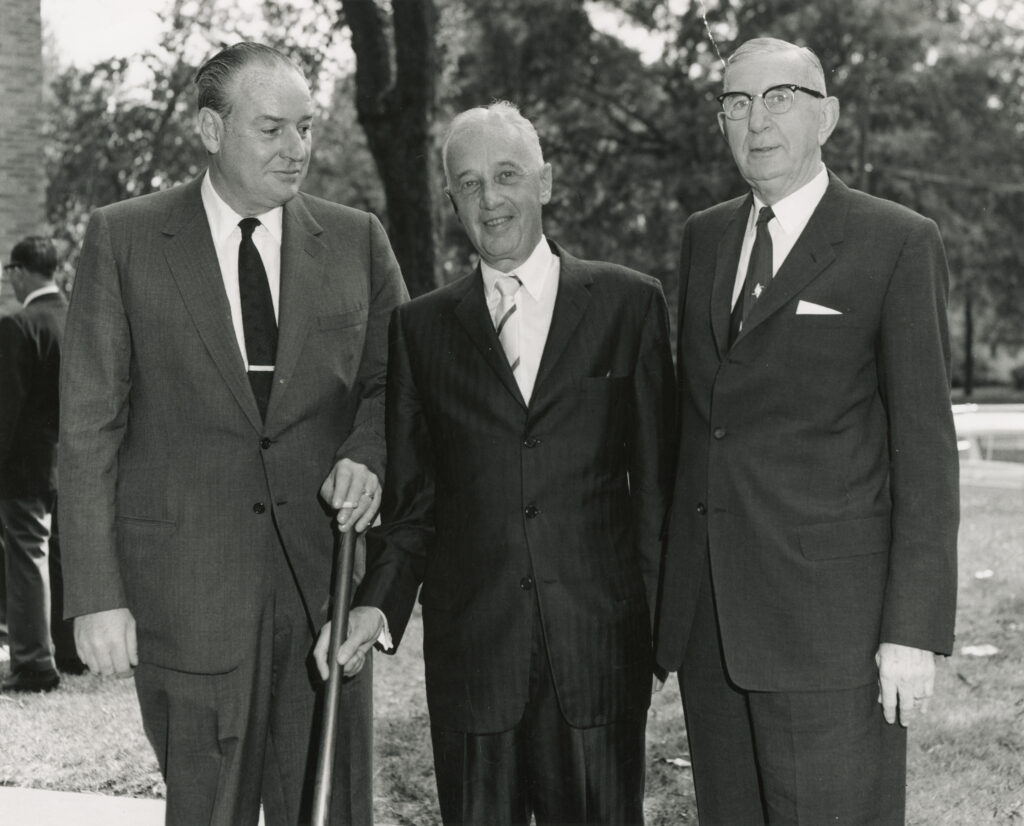by Brittany Reese
Winthrop Rockefeller played a pivotal role in shaping the state’s arts scene, most notably through the creation of the Arkansas Museum of Fine Arts, originally known as the Arkansas Arts Center.
According to its website, the Arkansas Museum of Fine Arts (AMFA) has a history spanning over a century. In 1914, a group of women formed the Fine Arts Club, a social club dedicated to studying art and art history. Their enthusiasm for the arts eventually led to the establishment of the state’s first permanent gallery in 1928, located on the fourth floor of the Pulaski County Courthouse.
The Fine Arts Club recognized the need for a larger space as the gallery’s collection grew. To fund a new building, the organization received a donation from Fred W. Allsopp and a grant from the Works Progress Administration. In 1937, the Museum of Fine Arts officially opened its doors.
In the 1950s, the Fine Arts Club partnered with the Junior League of Little Rock, Gov. Winthrop Rockefeller, and his wife, Jeannette Rockefeller, for a fundraising campaign to build a new arts center that would serve the entire state of Arkansas. Winthrop ultimately served as vice chairman of the campaign.
He spoke about the Art Center in a 1960 article in the Benton County Democrat, saying, “There are very few places in Arkansas with the facilities for producing legitimate stage plays, and the people would much prefer to have one good facility than to have a number of inadequate ones.”


Jeannette was a strong presence at the Arkansas Arts Center, serving as president of the board of trustees.
“The concept of an art center was a rather foreign one to many people, so that we went around the state…trying to tell the people what it could be, what it could mean to them, and of course, raising money,” said Jeanette in the 1970 Work in Progress campaign documentary from the Rockefeller for Governor Committee.
Over $600,000 was raised statewide for the campaign, along with personal donations from the Rockefeller family. Contributions came from businesses and individuals across the state, including children who collected nickels and dimes in jars, according to the AMFA website.
“I’ll never forget one little town we went into. I almost cried because as we walked in the door, there was $90 worth of pennies that the school children had saved to give to the Art Center,” explained Jeanette in the Work in Progress campaign documentary.
The City of Little Rock passed an ordinance in 1960 renaming the Museum of Fine Arts the Arkansas Arts Center. The Arkansas Arts Center held its grand opening in 1963.
During the grand opening, Jeanette gave a speech saying, “The Arts Center, its galleries, theatre, classes, cultural activities and services has a major objective: to further the development, understanding, and appreciation of the visual and performing arts among the people of Arkansas and it was the people of our state who wanted.”
After renovations, the name was changed to the Arkansas Museum of Fine Arts in 2019.
The AMFA Governor Winthrop Rockefeller Lecture Hall, named in his honor, seats 153 and serves as a mid-size venue for formal presentations, lectures, guest speakers, and other events.
Archival photos are provided by the UA Little Rock Center for Arkansas History & Culture.

Join us for a free lecture!
To learn more about the legacy of the Rockefeller family in Arkansas, we invite you to join us at a free lecture given by Dr. John A. Kirk at the Museum on April 17, 2025. The day begins with a complimentary coffee reception at 10:00 a.m., and the lecture starts at 10:30 a.m. in AMFA’s Performing Arts Theater.

